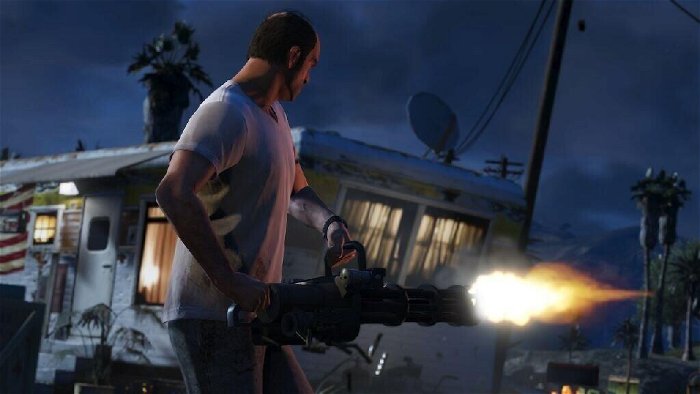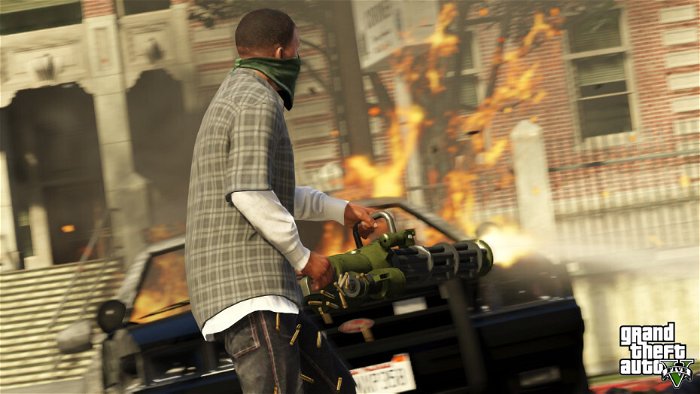According to the Canadian Mental Health Association, suicide is the second leading cause of death amongst young people in Canada; the statistic is the same over in the United States. While there are a multitude of factors that can contribute to suicide, an American study released in January found that action category videogames can play a significant role in suicide ideation and attempt. The study, published in the journal Cyberpsychology, Behavior and Social Networking, found that individuals who played extensive hours of action games (which the researchers define as first-person shooter, fighting, sports, horror and crime/war-themed games) evidenced the highest Acquired Capability for Suicide, or A.C.S. This is defined in the study as traits (for example, a lowered fear of death and higher tolerance for both physical and emotional pain) that can both physically and mentally prepare one to make a lethal or non-lethal suicide attempt.
It’s been well-documented the impact that action category games have on young people and its perceived violent content, not to mention the back-and-forth debate on the detrimental effects such games can have on the aforementioned age group. But when a recent study finds that these action games can potentially prepare a young person to make a lethal or non-lethal attempt on his or her life, should we take the Tomb Raiders, Street Fighters, Resident Evils, Grand Theft Autos, Left 4 Deads and other related games seriously when examining mental health issues such as suicide?

For Bradley Foster and Marlee Rubel, M. Ed, the answer to that question varies, as action games can be interpreted in different ways. Foster, a Toronto-based coach and psychotherapist, has been working with people with bipolar disorder, families. and young men who feel dissociated for ten years now. Rubel is a first-year Registered Psychotherapist who works at the Women’s College Hospital’s Trauma Therapy Program, as well as in private practice in Toronto. With a Masters degree in Counselling and Psychotherapy from the University of Toronto, Rubel has worked with many patients experiencing addictions and trauma for the past eight years.
Both Foster and Rubel have worked with patients who have had either video game addictions, suicidal thoughts and/or attempts, so when they reviewed the findings of the American study, each had a respective take.
“Similar to watching graphic news stories, or reading the difficult histories of different groups of people, consistent exposure to disturbing images and ideas can desensitize viewers and limit their capacity to authentically empathize with the concept of suffering,” Rubel says. “I appreciate the distinction made in this study between video games causing suicidal ideation, and video games increasing the likelihood that someone who is already suicidal will take action. This suggests that the cause of suicidal ideation can’t be blamed on video games alone. Instead, we should encourage institutions and communities to support high-risk video game users and help them to be less negatively influenced by action category video games.”

While Foster says he can’t dispute with the researchers’ findings, he does quibble with their conclusions. According to him, the suicide rate for young people aged 14 and 15 have more than doubled between 1950 and 2010 in the United States; however, it was even higher in 1980, before video games became pervasive. In other words, Foster says, the rate has gone down since the advent of video games. He also adds that Canadian suicidal rates have slightly increased, taking into account the high rates of Aboriginal suicides, courtesy of Statistics Canada. Foster acknowledges suicides are considered to be underreported—this is true worldwide and historically, he says. Given that, Foster notices some hiccups the American researchers overlooked when examining the relationship between action games and suicide.
“I think the study is flawed because it used a very unrepresentative sample,” Foster says, given the American study was based on 228 college students aged 17 and older, playing video games weekly. “It stands to reason that someone who plays more than five hours of violent video games a week is hiding from something, so it might have been sharper of them to study that group rather than a general group from which little is learned. I noticed that 14 per cent of the sample had a pre-existing diagnosis of mental illness, which didn’t seem to be followed in the study.”
According to the Centre for Addiction and Mental Health (CAMH), those at higher risk of suicide already have serious mental health and addiction problems, amongst other things; the study didn’t really reveal the psychiatric profile of the participants who already suffer from mental health issues, such as the severity of their mental health illness, the types of mental health issues they might have, and so on. The greater chunk of the 228 participants considered themselves to be mentally fine. Having said that, Foster believes that action category games don’t necessarily need to be considered when looking at suicide ideations and attempts.

“More important is the reason the young person is seeking out these games. People who don’t feel like they fit in, teens with early onset of bipolar, depression, anxiety issues, or schizophrenia are more likely to seek outlets like these to feel more powerful and active,” Foster says. “Certainly if people with these diagnoses are only interested in these types of games then it should be considered a warning sign and investigated. The biggest problem remains that males will not seek help for their conditions, which is often cited as a reason why male suicide rate is higher than female in any place you look.”
In terms of action games making young people “feel more powerful and active”, Rubel adds that video games in general have that ability to to allow users to step into a character role and “try on” behaviours that are not possible or desirable in their own real lives. In such a fantasy experience, Rubel says, empathy could be increased through exposure to other characters’ experience, which can also have a strong impact on the gamer. But, contrary to Foster’s statements, Rubel feels that action category games should be considered when examining suicide amongst young people.
“I believe that normalizing exposure to violence can lead to a distorted capacity to relate to others, and oneself empathetically,” Rubel says. “This can be particularly problematic when individuals play such games to a degree that leaves them isolated from their peers and community. In these cases, the power and control superficially experienced while playing violent first-person games can overshadow the real-life repercussions that such acts would elicit.”

And we all know those “real-life repercussions” to which Rubel makes allusions: the perpetrators responsible for massacres such as the ones in Columbine, Sandy Hook and Norway, for instance, who have been known to play games such as Call of Duty or Doom. Part of the real-life repercussions is constantly placing the blame on violent games for both homicides and suicides committed by and to young people. While there’s no solid proof to confirm that indeed action category games are directly responsible for any of the above-mentioned atrocities and more, a 2014 Oxford study found that game difficulty, as opposed to exposure to the violent content, could account for aggressiveness in players. Speaking with Wired UK about his findings, Oxford Internet Institute and author of the study Andrew Przybylski says it would be interesting if the young people committing any crimes didn’t play video games. As far as mental health is concerned, Foster agrees with Przybylski’s findings, and can somewhat relate. While not a fan of violent games, Foster says he doesn’t see any data that directly shows the game’s harmful effects. Foster’s own son suffered from depression and was addicted to violent games, but at the same time, Foster’s son found solace in a virtual world where he could release his frustration and make some friends along the way.
“It’s not all bad and it’s not all good,” Foster says.
On Jan. 27, hundreds of thousands of Canadians once again joined Bell in its sixth-annual Let’s Talk event, where the aim was to encourage conversation and raise awareness regarding mental health stigma, in addition to raising funds for mental health initiatives. Notable Canadian figures, such as Prime Minister Justin Trudeau, Olympic champion Clara Hughes, and comedian Howie Mandel, all joined in on the conversation; no problem was too big nor too small. But, as CAMH suggested post-Let’s Talk, the discussion surrounding mental health and mental illness is ongoing. For Rubel, the voices of and support for the young people who are at risk of suicide ideation and attempt and play action games should neither be silenced nor denied; they should partake in conversations with ones whom they trust enough to take their matters seriously.

“There is no harm in taking preventative measures to keep your thoughts, mood, and general well-being in check, and sometimes that requires a consultation with a professional,” Rubel says. “I often share with my clients that most of us do not feel ashamed at having to get our car tuned up annually—and we should feel the same about preventative measures for our mental and emotional health, even without an imminent concern. It should be considered just another standard habit in taking care of ourselves.”
In keeping with the habit of taking care of ourselves—and each other—Foster believes game developers should help raise awareness regarding mental health issues such as suicide. According to Foster, if there are those—whether it’s other gamers or the public, just to name a few—who stigmatize action games and suicide, he would hope that the developers add in some features to help their players get help. Foster says he has his own concerns with the term Acquired Capability for Suicide, as he believes that one can no more acquire that than you can catch a cold from an avatar in a game. He feels suicide ideation is already present before one plays a game; that the game can only help to develop it or reduce it, depending on the gaming experience and gamer personality.
“Perhaps video game developers can play a role in helping spread the word about mental illness and using their platforms to inform as well as to entertain,” Foster says.




